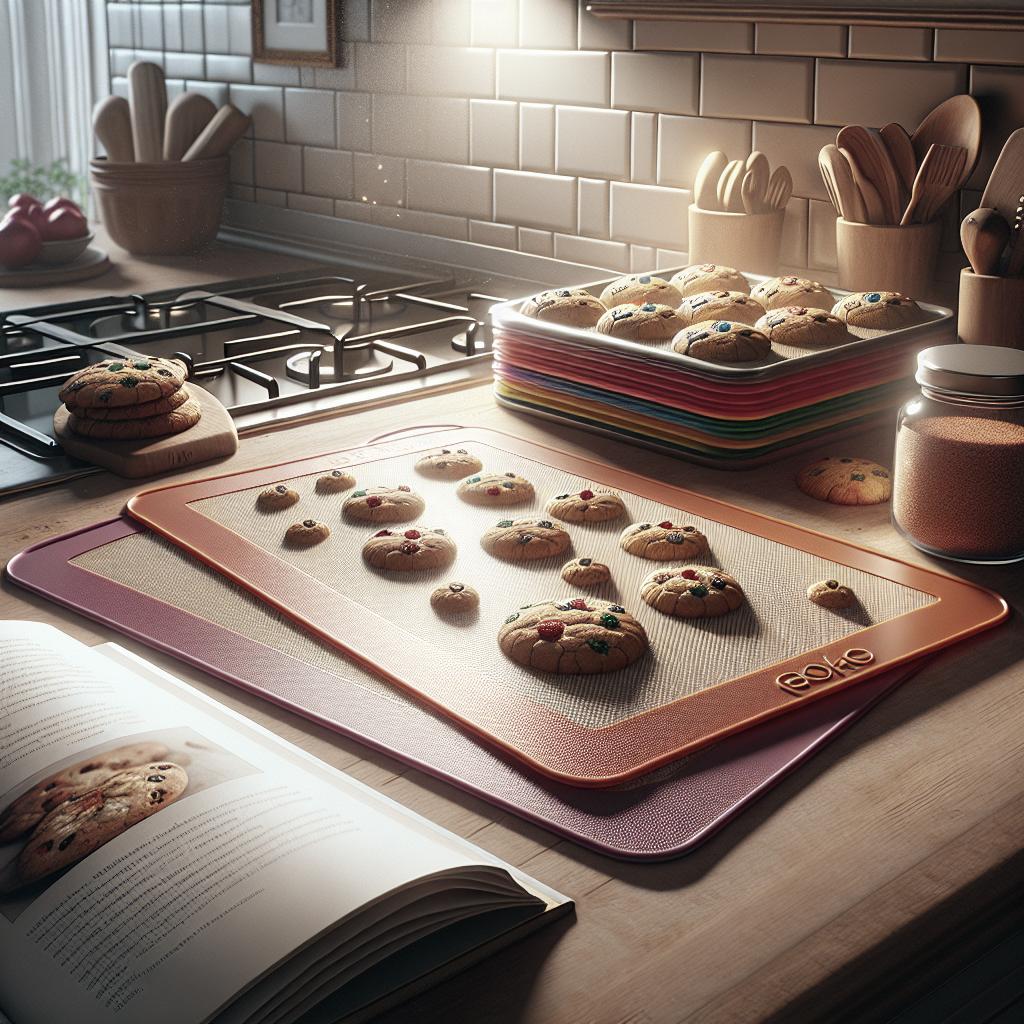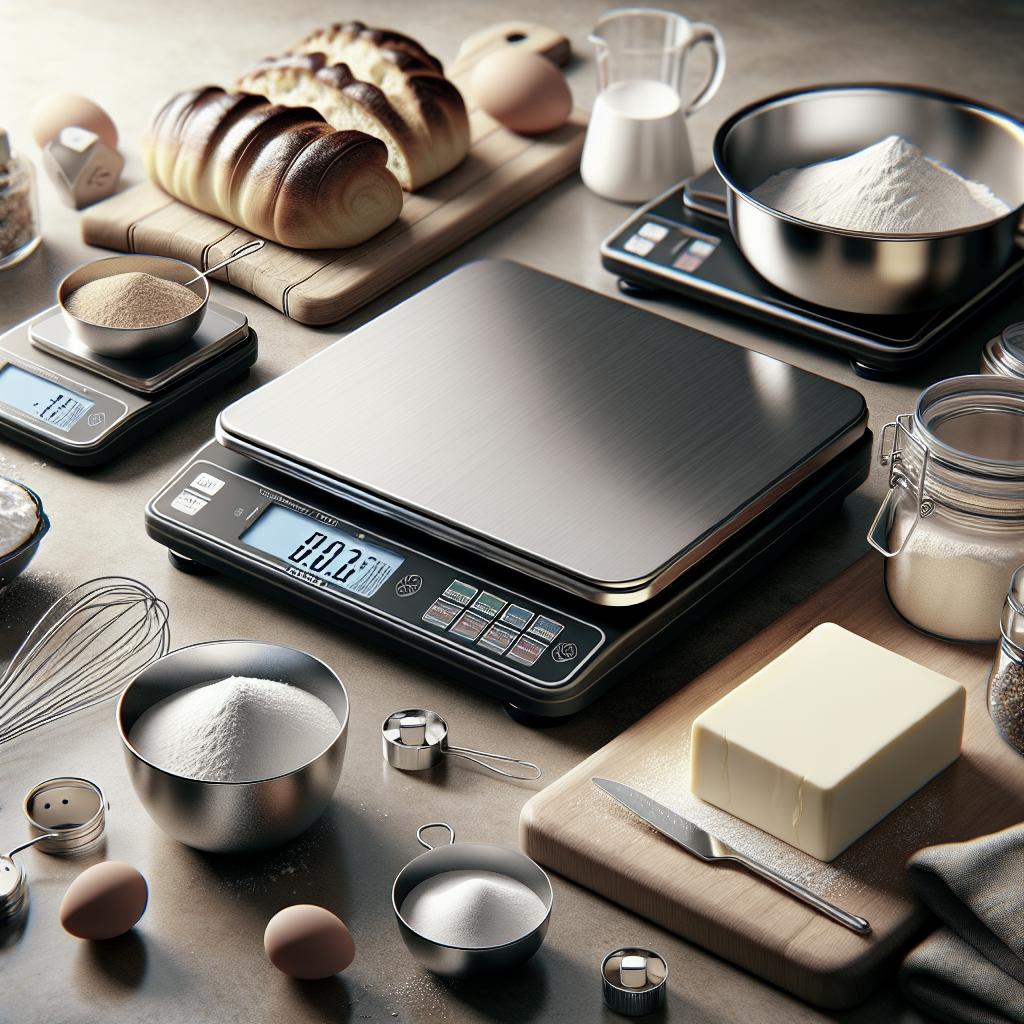< lang="en">
Baking enthusiasts and culinary professionals alike are increasingly turning to silicone baking mats for their kitchen endeavors. These reusable, versatile, and environmentally-friendly kitchen tools revolutionize how we bake and cook, providing numerous benefits over traditional parchment paper and other non-stick surfaces. In this blog post, we’ll delve into what silicone baking mats are, understand the material known as silicone, address concerns regarding its potential toxicity, and provide expert insights. We’ll conclude with practical takeaways summarized in an easy-to-reference table.
What are Silicone Baking Sheets or Silicone Baking Mats?
Silicone baking mats, often referred to as silicone baking sheets, are non-stick, reusable mats designed to simplify the baking process. They can be placed directly on baking trays to provide a smooth, heat-resistant surface for kneading dough, baking cookies, or roasting vegetables. Their flexibility and durability make them a go-to tool for both home bakers and professional chefs.
These mats are typically made from food-grade silicone, known for its heat resistance (up to around 480°F or 250°C) and non-reactive nature. Unlike parchment paper or aluminum foil, silicone baking mats can be used hundreds of times before showing signs of wear, making them a cost-effective and eco-friendly option. Additionally, their non-stick surface means that bakers can forego greasing pans or using separate non-stick sprays, leading to healthier cooking methods.
What is silicone?
Silicone is a synthetic polymer made up of silicon, oxygen, carbon, and hydrogen. It is widely used in various industries due to its remarkable properties, such as heat resistance, flexibility, and non-toxicity. When used in baking mats, silicone’s chemical stability ensures that it does not react with food or leach harmful substances into baked goods.
In the kitchen, silicone’s resistance to extreme temperatures, both hot and cold, makes it suitable for a wide range of applications, from baking trays to ice cube molds. Its nonporous surface prevents food absorption, making it easy to clean and maintain. These characteristics combined mean that silicone baking mats offer a reliable, durable, and safe option for avid bakers and cooks.
Update June 2020: For more up-to-date information, read The Toxicity of Silicone.
In recent years, questions regarding the safety of silicone, particularly when used in bakeware, have emerged. Although scientific research predominantly supports the safety of food-grade silicone, concerns about potential toxicity remain a topic of discussion. A comprehensive review titled “The Toxicity of Silicone” was published in June 2020, which delves into these concerns, assesses the current research, and provides recommendations for safe usage.
According to this review, food-grade silicone does not release harmful chemicals or particulate matter when used under normal baking conditions. The study also emphasizes the importance of purchasing high-quality silicone bakeware from reputable manufacturers to ensure that the products meet safety standards. Reading this review can equip consumers with essential information, reinforcing the semantic assurance that silicone is safe for regular culinary use.
Question from S. T.
Reader S. T. asks: “I’ve recently started baking regularly at home and have read mixed opinions about silicone baking mats. Some say they’re non-toxic and safe, while others mention potential risks with prolonged use. What should I consider when deciding whether to use silicone baking mats in my kitchen?”
Thank you for your question, S. T.! This is a common concern among home bakers weighing the benefits and potential risks of new kitchen tools. Let’s explore expert insights to provide a clear answer that helps guide your baking choices.
Debra’s Answer
Hi S. T., and thanks for your question. As someone who has researched extensively and utilized silicone baking mats in various culinary projects, I’d like to assure you that when used correctly, they are generally safe and offer numerous benefits. The key is to ensure you’re purchasing high-quality, food-grade silicone mats from reputable brands to avoid any low-quality products that might not meet safety standards.
Food-grade silicone is designed to withstand high temperatures without melting or releasing harmful chemicals. Furthermore, its non-stick properties reduce the need for additional oils or greases, making for healthier cooking and easier cleanup. Always follow care instructions provided by the manufacturer to extend the lifespan of your silicone baking mats and ensure they retain their safety and functionality over time.
Leave a comment
We’d love to hear your thoughts and experiences using silicone baking mats! Do you have any favorite recipes or tips for getting the best results? Share your comments below and join the conversation. If you have any questions, feel free to ask, and our team will be delighted to help!
| Section | Content |
|---|---|
| Introduction | A review of silicone baking mats, their uses, benefits, and safety. |
| What are Silicone Baking Sheets or Silicone Baking Mats? | Definition, benefits, and common uses in baking and cooking. |
| What is silicone? | An explanation of silicone as a material, its properties, and kitchen applications. |
| Update June 2020: For more up-to-date information, read The Toxicity of Silicone. | A summary of the June 2020 review on silicone toxicity and its conclusions. |
| Question from S. T. | Reader’s inquiry about the safety of silicone baking mats. |
| Debra’s Answer | Expert response addressing safety concerns and best practices for silicone baking mats. |
| Leave a comment | Invitation for reader interaction and sharing of experiences or inquiries. |


